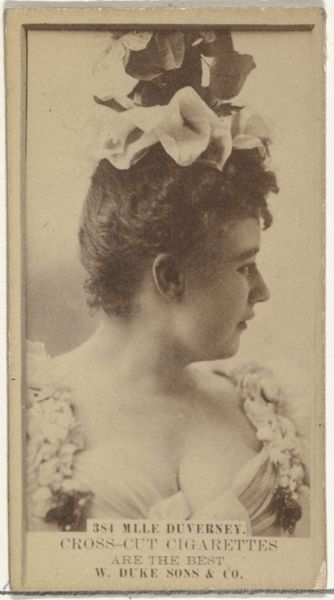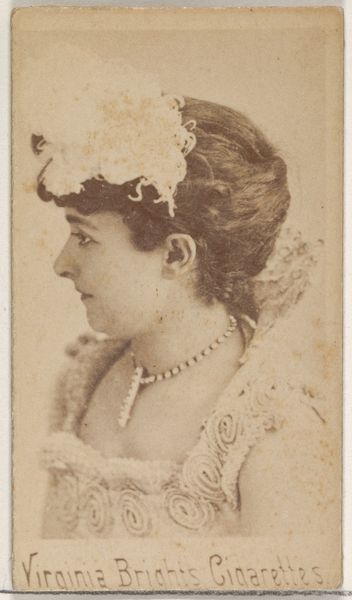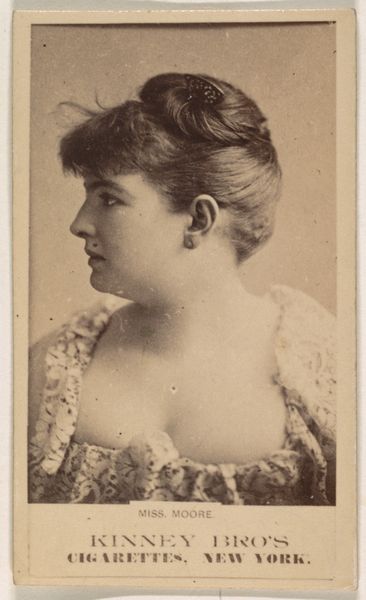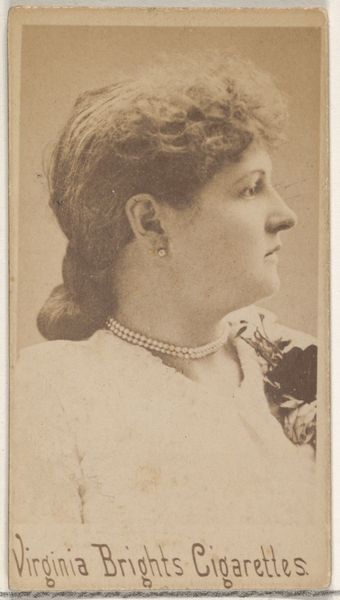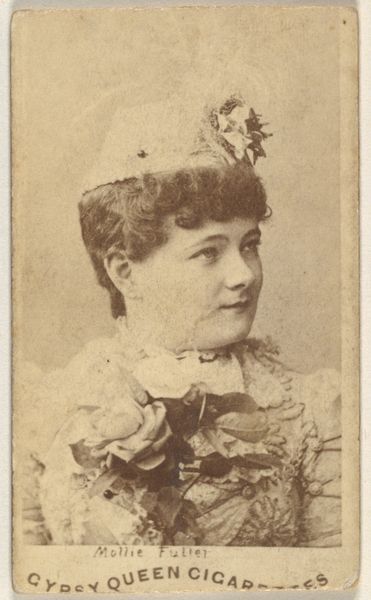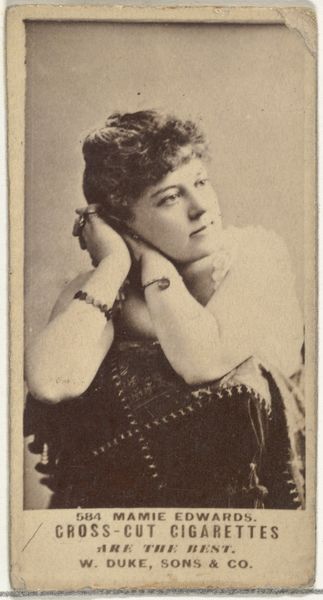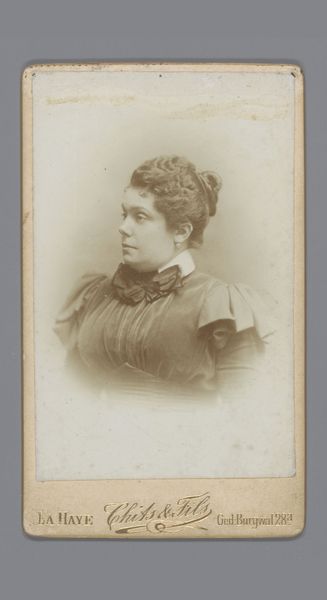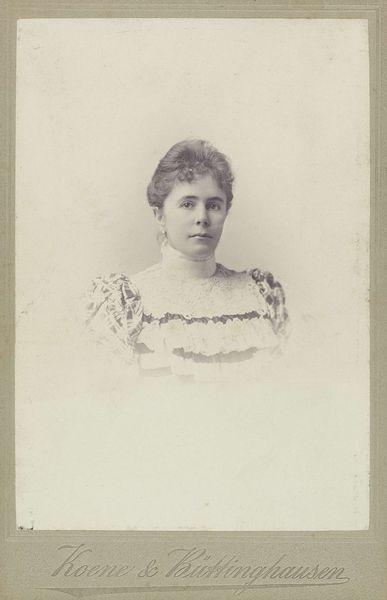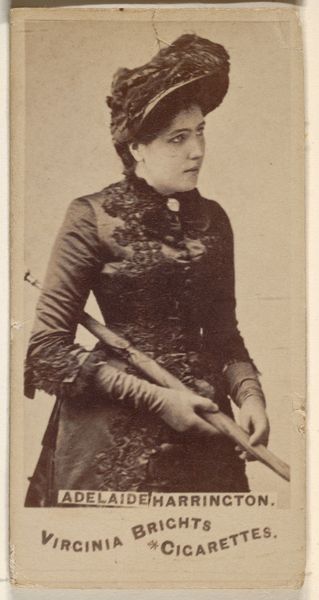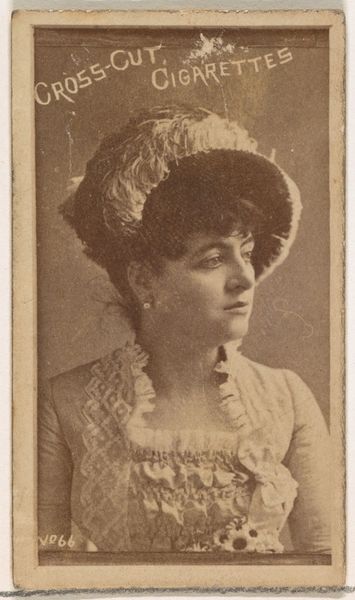
Card Number 31, Forsythe, from the Actors and Actresses series (N145-1) issued by Duke Sons & Co. to promote Cross Cut Cigarettes 1880s
0:00
0:00
print, photography
#
portrait
#
pictorialism
# print
#
photography
#
historical photography
#
19th century
Dimensions: Sheet: 2 1/2 × 1 3/8 in. (6.4 × 3.5 cm)
Copyright: Public Domain
Curator: Looking at this image, I'm struck by the soft, sepia tones, almost dreamlike. There's a delicate lace at the neckline that reminds me of Victorian sensibilities. It's sweet but something about her gaze feels a little sad. Editor: Let's delve deeper. This is "Card Number 31, Forsythe" from the "Actors and Actresses" series (N145-1), published in the 1880s by W. Duke, Sons & Co. It was made as a promotional insert for Cross Cut Cigarettes, it now resides at the Metropolitan Museum of Art. The photo exemplifies the popular 19th-century pictorial style, an approach to photography meant to emulate painting. Curator: Cigarette cards! Of course. So these portraits of actresses and actors would have been in cigarette packs, turning the famous performers into objects of everyday consumption. That’s a potent way to link fame and commodity culture, really feeding into the late 19th-century obsession with celebrity. Editor: Precisely. And what’s fascinating to consider is how these images participated in shaping idealised notions of femininity, too. This photograph constructs an image of womanhood, and invites inquiry regarding spectatorship, commerce, and the objectification of women at that time. The actress becomes a signifier of aspirational culture. Curator: Thinking about it now, even her melancholic expression fits in. Maybe it taps into the notion of the tragic actress, vulnerable, beautiful, yet ultimately performing a role crafted for the male gaze? The framing and vignette effects create this intense intimacy with her. Editor: The way they're literally consumed and collected affects how these photographs are culturally appreciated, as well. It turns into a feedback loop, blurring the boundary between the celebrity, the consumer, and commercial forces. Curator: Looking at this portrait today encourages me to ask: what about these images still appeals to us? What societal values do we place upon figures presented by media? How can we create an industry free of some of the power dynamics present here? Editor: Exactly, a poignant reminder of art’s ties to culture. Each image speaks to past dynamics that continue shaping contemporary ones.
Comments
No comments
Be the first to comment and join the conversation on the ultimate creative platform.

